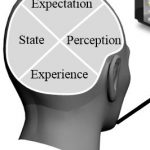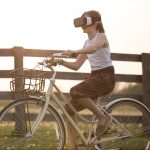 Apart from VR, it is useful to briefly discuss the concept of Augmented Reality (AR). In our previous post, we have learned that VR applications completely replace a user field of view with, for instance, head mounted displays (HMD). Thus, a user is immersed into a VR environment such as 360° videos or VR game. In this VR a user sometimes can interact with the virtual objects and move around the VR scene. Continue reading “Virtual Reality vs. Augmented Reality”
Apart from VR, it is useful to briefly discuss the concept of Augmented Reality (AR). In our previous post, we have learned that VR applications completely replace a user field of view with, for instance, head mounted displays (HMD). Thus, a user is immersed into a VR environment such as 360° videos or VR game. In this VR a user sometimes can interact with the virtual objects and move around the VR scene. Continue reading “Virtual Reality vs. Augmented Reality”
What is Quality of Experience (QoE)?
 Network operators and service providers from the very advent of telecommunications wanted to know what is the level of service quality which is provided to the end users. This is because that knowledge can be extremely useful when trying to manage network topology, optimize its capacity and operating costs, introduce new services or plan investments and expansion of a network. Continue reading “What is Quality of Experience (QoE)?”
Network operators and service providers from the very advent of telecommunications wanted to know what is the level of service quality which is provided to the end users. This is because that knowledge can be extremely useful when trying to manage network topology, optimize its capacity and operating costs, introduce new services or plan investments and expansion of a network. Continue reading “What is Quality of Experience (QoE)?”
Virtual Reality 101
 The most straightforward definition of Virtual Reality (VR) would be that it is a computer emulated 3-dimensional reality which can be explored and interacted with by a person. Additionally, we could say that when an application renders a visual and audio scene to its user, in a manner that imitates the visual and audio sensory stimuli of the real world as naturally as possible, then that user is in the virtual reality. As he or she moves through this virtual environment and possibly (but not necessarily) interacts with the objects within the rendered scene, the VR application delivers a new visual and audio scene and provides an immersive experience to a user. Continue reading “Virtual Reality 101”
The most straightforward definition of Virtual Reality (VR) would be that it is a computer emulated 3-dimensional reality which can be explored and interacted with by a person. Additionally, we could say that when an application renders a visual and audio scene to its user, in a manner that imitates the visual and audio sensory stimuli of the real world as naturally as possible, then that user is in the virtual reality. As he or she moves through this virtual environment and possibly (but not necessarily) interacts with the objects within the rendered scene, the VR application delivers a new visual and audio scene and provides an immersive experience to a user. Continue reading “Virtual Reality 101”

